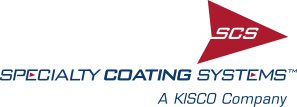<< View SCS Blog
Managing Parylene Adhesion
It is imperative to obtain proper adhesion of the coating to the substrate in order to truly reap the benefits of Parylene conformal coating. Poor Parylene adhesion, after all, can negate some of Parylene’s most-prized properties, including corrosion resistance, chemical resistance, moisture resistance, and dielectric strength. So, it’s in an engineer’s best interest to understand the importance of Parylene adhesion and how to obtain it.
Parylene mechanically adheres to surfaces rather than chemically, allowing it to penetrate small substrate pores, bond internally and essentially adhere through cohesive forces. The problem with this method of adhesion, however, is that it’s only effective when there is something for Parylene to flow into. Parylene frequently does not adhere effectively to noble metals, for example, especially the gold that is prevalent in circuit boards where high levels of conductivity are important.
Parylene adheres uniformly to almost any surface, regardless of its topography or geometry. This characteristic makes Parylene a truly conformal coating, serving as a highly effective barrier. Nonetheless, while it can coat a wide range of substrates, Parylene adhesion may be impacted by contaminants present on the substrate surface. As such, all surfaces—even solder fluxes that are designed not to require cleaning—must be perfectly devoid of any contaminants. Oils and other organic compounds, whether natural or artificial, also can negatively impact Parylene adhesion.
Before coating any substrate with Parylene, adhesion problems can be managed by conducting cleanliness testing. This process identifies the contaminants that are present on the material, if any, so that they can be removed prior to the Parylene deposition process. If the material requires cleaning, it can be cleaned with manual, batch or ultrasonic processes, as appropriate.
Once a surface is clean, it can be modified to promote better Parylene adhesion. Typically, treatment with A-174 silane helps make stainless steel and other metals more receptive to Parylene coating. To enhance adhesion, the substrate is typically treated with silane vapor or immersed in the compound. The silane forms a chemical bond with the surface, creating a foundation for Parylene to adhere to mechanically.
SCS’ advanced adhesion promotion technologies improve Parylene adhesion in instances when A-174 silane is either unsuitable or ineffective. Developed by SCS’ industry-leading team of research and development engineers, AdPro Plus® and AdPro Poly® increase adhesion between Parylene coatings and difficult substrates, including titanium, stainless steel, gold, chromium, solder mask and many polymeric materials. Parylene, for instance, has demonstrated improved adhesion to silicon in response to surface roughening with xenon difluoride gas. For medical devices, on the other hand, the use of plasma surface-treatment methods appears to reduce problems with delamination.
When Parylene fails to adhere effectively to a substrate, it jeopardizes the array of its positive properties. Yet, overcoming the challenges of applying a flawless, pinhole-free and durable coating is feasible with proper preparation, attention, and expertise.

